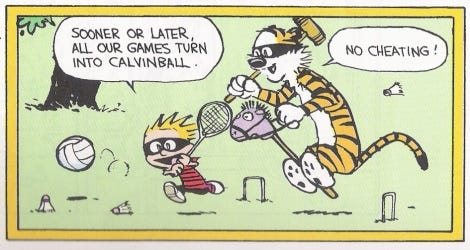Investigating Meta, but Not in a Meta Way
How strategies and styles of play in sports are created and change
The 2024 League of Legends (“League”) World Championship wrapped up in November as one of the most watched esports events of all time, peaking at 50 million concurrent viewers globally. In response, Riot Games, the creator of League, did what any professional sports governance body would obviously do, and made sweeping changes to the game itself. Not only did they make changes affecting all online players like overhauling the game’s map (effectively the playing field), it’s gold generation mechanisms (somewhat of a scoring analog), but they also created a completely new champion drafting structure for competitive play. It was like they decided to change the dimensions of a basketball court, add a 2.5-point line, and change how teams can field a set of players in one go.
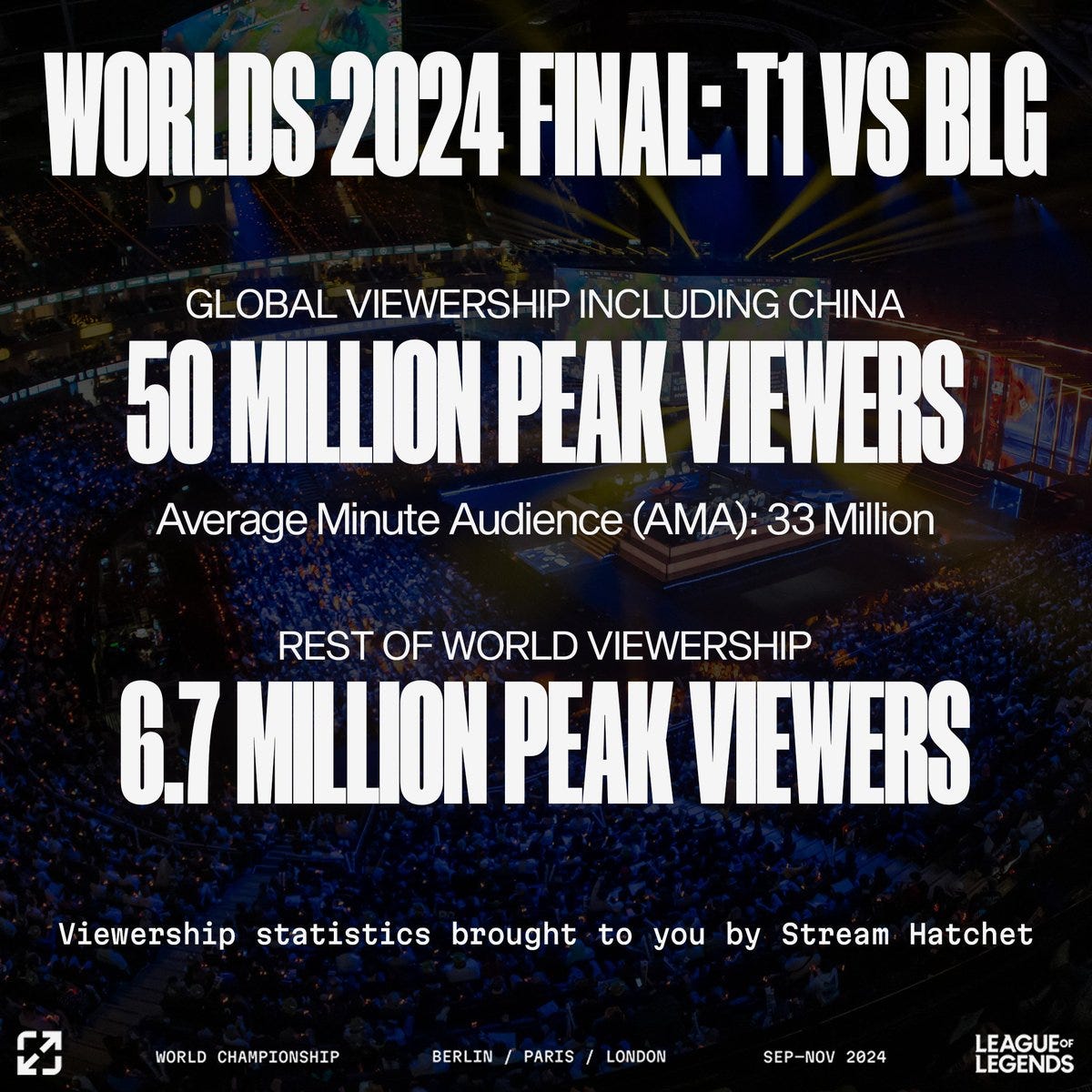
Perhaps most shockingly, changes of this magnitude happen to League nearly every other year, and it’s a cycle that is relatively common among esports like League, Fortnite, and Overwatch. The frequent changes (in theory) help the game itself stay fresh and maintain popularity despite a highly dynamic backdrop of fandom and attention. Like most sports, every season of League generates new storylines for individual players and teams, but each season also ushers in new storylines related to the underlying game (or esport) itself, the combination of which dramatically shift the overarching strategies and styles of play that teams employ to win, collectively known as the “meta,” short for “metagame.”
In somewhat of a roundabout way, it’s useful to think about the concept of the meta by focusing on what alters it— what forces lead to changes in the way that teams deploy strategies and play styles, either rapidly, or slowly over time. There may be some additional facets that fall on the edges or outside these buckets, but I think most changes in the meta for a given sport are driven by five distinct factors:
The Rules of the Game. Scoring system, playing field dimensions, ball type, penalties, rewards, obstacles, race distance, number of players, communication modes, etc. Effectively all the facets that define the sport either globally or within a specific league.
The Rules of the League. Number of teams/competitors, season structure, financial incentives, talent acquisition mechanisms, TV rights, etc. In essence, how the governing body organizes individual instances of the game into a formal structure to determine winners and losers and manage the teams and athletes.
The Active Players. What are the active players capable of doing, how many are there, what’s their skill distribution, how much money they demand, etc. Including advances in available technology through equipment and gear, what are individual athletes and the collective capable of achieving?
The Active Strategists. How strategic, creative, adaptive, disciplined, calculating, and insightful are the active strategists, in relation to both the rules of the game, and the rules of the league (i.e. coaches and GMs). Similar to active players, the tools that strategists have change over time.
Pure Innovation. At some point, someone was the first person to look at a narrow piece of paper and think “I’m going to use this to mark a page in my book,” and someone also thought “what if we threw the football” for the first time. Breakthroughs and inventions happen with the same set of constraints and tools all the time, and it’s no different in sports.
If you look at this list, you might notice that the rate of change in some of these areas is more dramatic in certain sports, which plays to their strengths and weaknesses as entertainment properties. For instance, the NFL has very short average careers, so the set of active players changes more quickly than a league like the PGA Tour, and European soccer can be quite exciting because teams can play in multiple leagues that each deploy different overarching rules and formats like the EPL, FA Cup, and Champion’s League. Even pure innovation can be more easily generated in certain sports. To reuse a previous example, I think the sport of football promotes much more novelty in-game plays than a golf tournament does.
In the process of trying to create a meta that retains fans and drives entertainment, leagues can take a very active or a passive role. In general, I think the more a league relies on the passive approach for changes to come from Pure Innovation within the same set of confines over time, the more stale a game can feel in the long run. On the flip side, leagues with active, dynamic rule changes and higher turnover of star athletes and coaches can feel constantly fresher.
However, what’s interesting about most traditional pro sports leagues is that they often eschew the prospect of major rule changes from the list of options to change the meta of the game. We’ll loop back to why this might be, and why that might change in the near future, but I first want to dig into some examples of both intentional and unintentional examples of decisions that lead to the current meta in modern sports.
Perhaps one of the most publicized recent examples, the NBA’s meta has been completely overwhelmed by the rise of the three-point shot, a shift driven by both the Rules of the Game and the Active Strategists, in particular through advancements in analytics. The three point line wasn’t introduced to the NBA until 1979, and admittedly it took a long time for the three-pointer to become the cornerstone of strategy in the league. Teams like the Golden State Warriors really only started to employ a three-point-first strategy in the 2010’s, and additional rules like more stringent hand check and landing zone foul calls have added fuel to the fire.
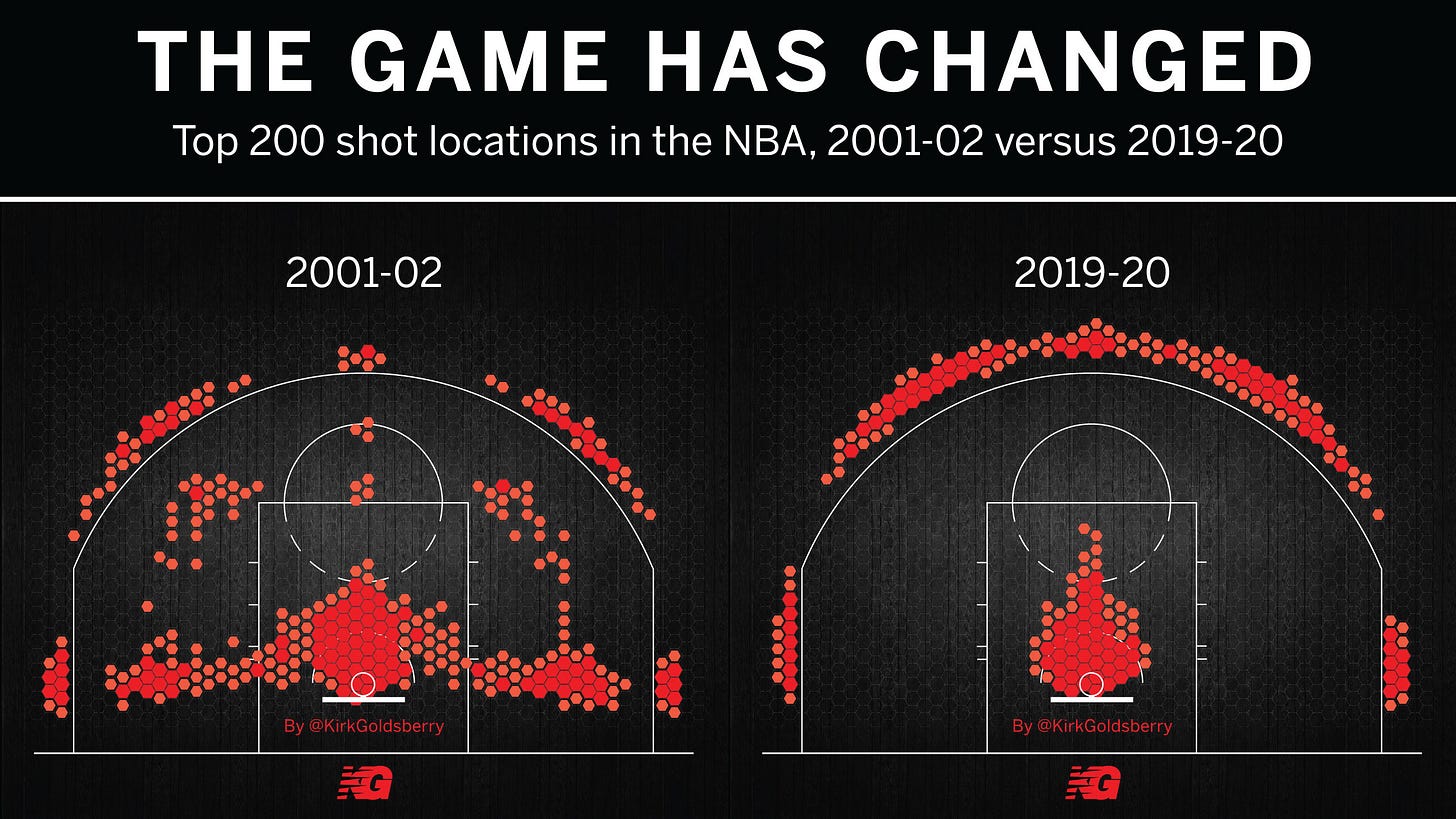
The rise of three-point-centric teams has prompted some other changes to the league as a result, and created a positive feedback loop centered on the three. You see a lot more smaller, more agile players in the game, and even dominant interior players like Nikola Jokic are proficient three-point shooters now (even if it looks ugly sometimes)— the Active Players are reinforcing the current meta. It’s to the point now where fans and media pundits are starting to decry the entertainment level of the sport. The NBA is now considering how to reduce the amount of time players spend taking three pointers in a game, to speed up games, and it will be interesting to see how quickly they act— I for one would highly recommend swift action, especially with some waning popularity for the league.
Perhaps in contrast to the NBA, I think the NFL has done an extremely good job maintaining general parity in its product, in part due to the Rules of the League. The NFL introduced the salary cap in 1994, which has redefined team-building strategies multiple times over at this point as different positions become more and less valuable. With a hard cap in place, franchises are more heavily reliant on strong rookie contracts and quarterback value. The quarterback already might have been the singular most impactful position in all of sports due to football’s rules, and as the set of high-quality Active Players at positions like running back and on defense increases, it means that emphasis is placed on roles with less equality like the quarterback.
In addition, the modern NFL has nurtured the rise of the passing game through rule changes that protect receivers and QB’s (often times contentiously) relative to the past when players like Marvin Harrison were reaping souls. Mobile quarterbacks and offensive schemes that employ the run-pass option (RPO) have also been furthered by the rise of QB protections while running in the open field, but are certainly the result of the Active Players today too. QB’s like Donavan McNabb and Michael Vick were precursors for a now common rushing QB profile with athletes like Lamar Jackson, Josh Allen, and Jayden Daniels adding mobility to the position— which in turn has implications on the defensive strategies. In general, I am impressed with the NFL’s ability to have a game whose meta shifts without significant rule changes (aside from safety-related tweaks like the new kick-off rules introduced this season)!
On the ice, the NHL’s meta has shifted most teams away from big bruising players towards smaller players with higher speed and skill, driven by changes in both the Active Players and the Rules of the Game. Post-2005 adjustments, such as eliminating the two-line pass rule and enforcing stricter penalties for hooking, opened up the ice for faster, more agile players. Even changes to icing rules and players’ own ability to flip pucks out of the zone in the air have changed the style of play in the league! Coupled with advancements in skate and stick technology, the modern NHL favors players like Connor McDavid and Cale Makar, who thrive on explosive speed and finesse. Of course there are still bruisers on lower offensive and defensive lines, but it’s much rarer to have a full teams of goons up and down the roster.
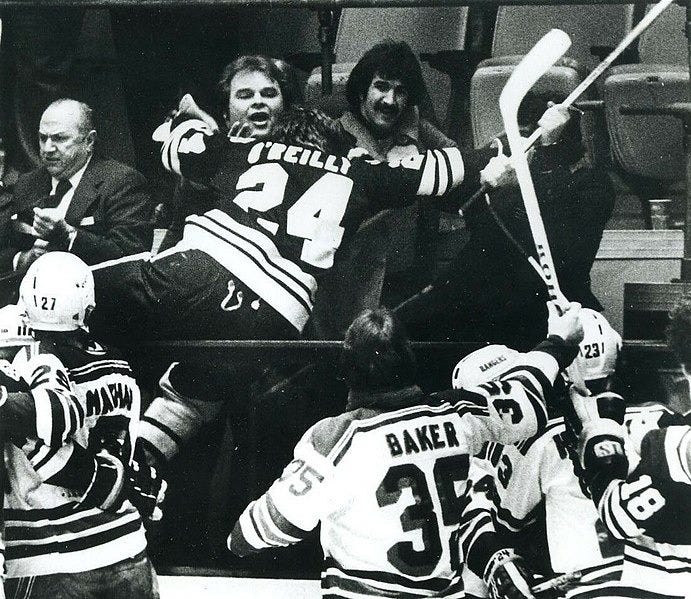
Perhaps the biggest, most broad impact in hockey has been the evolution of goalie equipment and the rules governing it, though. If you watch footage of a goalie in small rudimentary pads from the 1970’s and 80’s trying to play, it looks comical. They are all over the place trying to close the gap between the offensive player and themselves because their surface area coverage was so much lower than it is today, almost like a soccer goalie. Modern advances in pad, helmet, and even skate tech have made goalies able to physically wear more gear, and the NHL allows larger pads and sticks than in the past as well. In this instance the Rules of the Game hold a lot of power. It’s pretty wild to think about how much the game would change if goalie pads were restricted to 75% the size they are now.
Similar to the recent decrying of the current meta in the NBA, the MLB’s current strategic landscape is often panned. Of course, Active Strategists changed the game with “Money Ball” analytics that revolutionized strategic thinking and minimized traditional practices like the sacrifice bunt and increased the use of shifts (until they were banned). Moneyball’s data-driven approach has led to the current meta where teams to prioritize home runs, walks, and strikeouts. This "Three True Outcomes" (TTO) philosophy now dominates, and it has led to a very different play style with fewer runners on base throughout the course of a game.
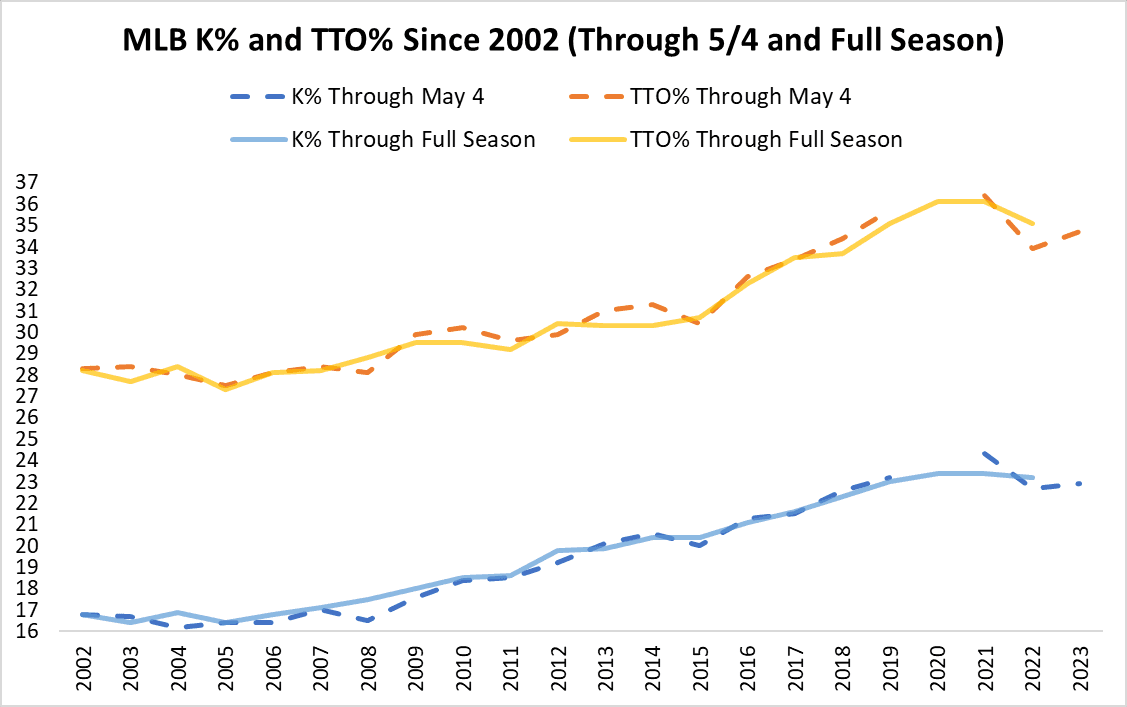
When this philosophy is paired with the landscape of Active Players, namely pitchers throwing the ball better than any time in history, its impact on the meta is amplified— on the rare chance you make contact with the ball well, it might as well be a swing for the fences. As a result, launch-angle hitting and player strength batting have become somewhat prioritized over other facets like fielding. Of course, players trying hit for home runs more specifically has changed the way pitchers play in return, so they have developed new pitch arsenals to counter these trends, and teams even manage bull pens completely differently than they did five years ago. This interplay mirrors the constant "meta-breaking,” or “countering” efforts seen in esports, where strategies are developed to exploit the dominant play-style of the moment. These types of changes are often the result of Pure Innovation or brought on by the rise of a single new dominant player (like Shohei Ohtani).
Outside the world of team sports, the set of Active Players (riders), and technological advances they wield in terms of nutrition and aerodynamics have changed the sport of cycling completely. Nowadays, even major races are won by one dominant rider going out on a solo effort for over half an hour in front of a large pack of riders— something rarely even dreamed about even 15 years ago. Riders like Pogacar, Van der Poel, Evenepoel, and many others are peaking for specific races at such a high level that they can leverage modern bike technology to effectively ride as fast as the peloton for an extended period of time. Of course, a coach or director did need to craft this go-it-alone strategy, but its pervasiveness is likely more so the result of the talent in the sport right now. If you ever have a free 60 minutes, I recommend watching this video of Filippo Ganna setting the world record for most distance covered on a bike in an hour to see the technology and athletic strength modern riders use:
If there’s one extremely clear takeaway from all these examples, it’s that the concept of the "meta" and its change over time are certainly not confined to esports but is a universal aspect of competitive activities. Whether in League of Legends or the NFL, the pursuit of optimized strategies within the constraints of rules and resources underscores the dynamic nature of the competition itself. By recognizing, adapting, and creating shifting metas, both esports and traditional sports continue to evolve, ideally ensuring both popularity and longevity for the games and leagues themselves.
Which brings us all the way back to one of the underlying questions in this article— what the end goal in trying to establish a meta for a sport or league? It’s a question that you could likely write an entire dissertation about. However, at the highest level, I think any sport and league need to maintain two things at all times: familiarity and novelty (which are often diametrically opposed). This can be achieve through a system with actively changing game and league rules to intentionally drive changes in the meta, or one can try to craft a system with relatively static rules that naturally promotes novelty within it— high turnover in players and which teams win the championship, or moments of innovation and excitement (which are often amplified through modern social media platforms).
Depending on how you look at it, I think the good news is that either of these course of action can work, as it’s nearly impossible to keep a meta for a sport the same in perpetuity (hell, even modern classical chess breeds novelties from time to time). However, I do think that most leagues could benefit from a more active approach to meta crafting and I think the five major knobs highlights above provide the basis for a basic tool kit to do so. Especially in an attention economy becoming much more frenetic with shortening trend duration, I do think leagues will need to figure out ways to both hone in on more exciting meta states, while ensuring they are constantly changing in order to keep fans engaged. This can happen naturally, as mentioned throughout the article with the turnover of players and coaches and technology and through pure inspiration, but leagues need to be prepared to make more dramatic shifts in rules of the game and their league moving forward if they want to stay dominant.
We take for granted that popular sports generally remain popular, when their engagement will inevitably ebb and flow over time like everything else. This is why the NBA is considering shortening games, and why the MLB is toying with the idea of the “Golden At-Bat” (which it sounds like they won’t enact sadly). I think these types of changes, and perhaps more dramatic ones are likely to become more prevalent moving forward. However, it is still critical that sports and leagues maintain some level of familiarity to maintain some consistent engagement over time, unless they want to become the ship of Theseus of sports. If leagues reach the natural conclusion of their evolution over the years, maybe they will all end up looking like Calvinball!
